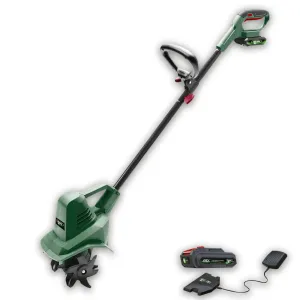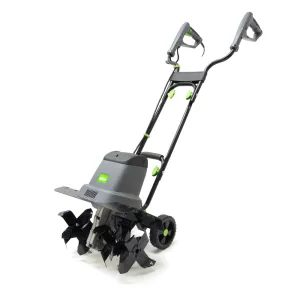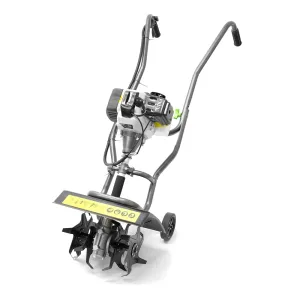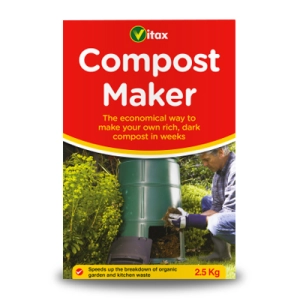Over time, garden soil can become compacted through heavy footfall or equipment use, a lack of soil enrichment, or simply because the type of soil you have is more prone to compaction (clay soils for example).
Soil compaction reduces the amount of water the soil can absorb, weakening its fertility and preventing roots from penetrating the soil deep enough for sustainable growth.
Even on soil that isn’t compacted, tilling can significantly improve its quality and help deliver a rich, well-draining base for plants to thrive.
What happens when you till the soil?
When you till, you slice through the soil, allowing oxygen and water to move through it more productively. This oxygen addition helps break down any organic matter which in turn will benefit root development as plants begin to grow.
Tilling also helps eliminate the root systems of weeds, cutting into them and bringing them to the surface, making it easier for you to pull them out.
If you apply organic matter to the soil before you begin tilling, this will be turned and mixed through the garden soil to improve its overall quality.
What is the best tool to use to till garden soil?
There is a slight difference between tillers and cultivators to note first of all. A cultivator will loosen soil and help remove weeds from planting areas, whereas a tiller will work the soil more effectively and really help break up solid ground.
You may see a range of hand tools sold as tillers, (small three-pronged forks with angled tines for example), these are really cultivators – good for loosening surface soil but won’t effectively break up compacted soil.
You can still till the soil by hand if you prefer. If you’re up for the exercise, tilling can be achieved using a sturdy garden fork or broad fork, or a larger twist, rotary or claw tiller.
But for ease, nothing really beats a powered tiller – a machine specifically designed to till the soil, without stressing your muscles.
Powered tillers come in many forms and are capable of tilling to various depths. Smaller lightweight tillers like our Webb Cordless Tiller will use its powerful tines to till to around 150mm, whereas larger tillers can cut through soil to around 350mm deep.
Your choice of tool really comes down to how compacted your soil is and the depth you want to till to. Get in touch with our technical team if you’re unsure.
How to till soil
Start by removing large weeds, rocks, stones and harder lumps of soil from the area you intend to till. It is extremely important to try and remove all the rocks and stones in the path of a tiller to avoid damage to blades and injury to you.
If you’re using a powered tiller, make sure you wear eye protection before you begin. The rapid blade turning can throw up pieces of soil and debris.
If you want to enrich your soil, add compost at this stage, spreading it over the ground evenly. For good enrichment, add around three inches of compost or organic matter.
Follow the manufacturer’s instructions if you’re using a powered tiller for the first time, setting the required depth. Then much as you do when mowing, move in lines up and down the area to be tilled, digging into the soil.
If you’re using a powered tiller, try and maintain an even, steady pace. Don’t let the tiller run away with you so that it skips over the soil, or go too slowly that it does not move on and digs too deeply into the soil. Only till the earth once (in other words, don’t go back over sections you’ve already tilled).
When to till the soil
The best time to till soil is when the ground isn’t too hard, too frozen or too wet. So avoid very cold winter months, baked summer soil, or just after heavy rainfall.
Early spring or autumn are ideal times to start tilling, before heavy rains begin and before the ground starts to harden. The most effective tilling takes place on dry-ish, crumbly soil. Avoid very wet soil as tilling will just encourage the soil to form clumps.
Autumn is a good time to till if you want to enrich the soil. The nutrients can get to work over the dormant winter period ready to support healthy growth come spring. Whereas a spring till will help prepare the ground ready for planting once the soil has started to warm up.








